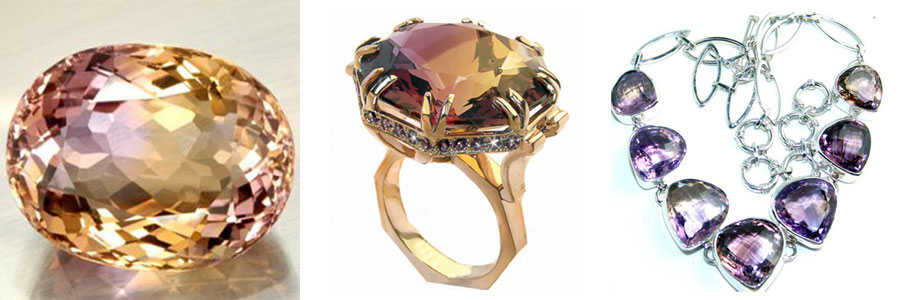Ametrine gemstone
Home ➤ Encyclopedia of gems ➤ Ametrine gemstonePhysical properties of ametrine
| Hardness: | 7 out of 10 on the Mohs scale |
| Luster: | glass |
| Transparency: | transparent, translucent |
| Color: | two-tone - purple, lilac, lilac or yellowish peach |
Characteristics of ametrine
Ametrine (amethyst-citrine, bolivianite) is one of the most extraordinary gemstones. After all, it is, as it were, a combination of two other well-known gems - amethyst and citrine (for which it received its other name "amethyst-citrine"). In nature, this happens very rarely, so ametrine turned out to be a truly extraordinary gemstone.

The only pity is that real ametrines are mined in only one place - in Bolivia, the Anahi mine (which is why they called ametrine by another name - "bolivianite"). However, ametrine is worth the trouble to look for it. After all, this gem is unusually beautiful and attracts attention with its unusual two-tone color.
The color of ametrine can be purple, lilac or yellow-peach.
But be careful, even though ametrine is not a particularly expensive stone, artificial ametrines are still being made (for this purpose, amethysts are taken, which are treated with high temperature or irradiation). And it is impossible to distinguish artificial ametrines from real Bolivian stones without special equipment, while the former are an order of magnitude lower in price than the latter.
How much does ametrine cost
Ametrine prices are high. Large stones are especially highly valued, as they are rare. Beads made from medium-sized natural ametrines will cost from $450 to $600 per strand. Synthetic ametrines are much cheaper - no more than $200 per thread.
| ★ Aventurine gemstone | |
| See also: | ★ Zircon gemstone |
| ★ Iolite gemstone |





